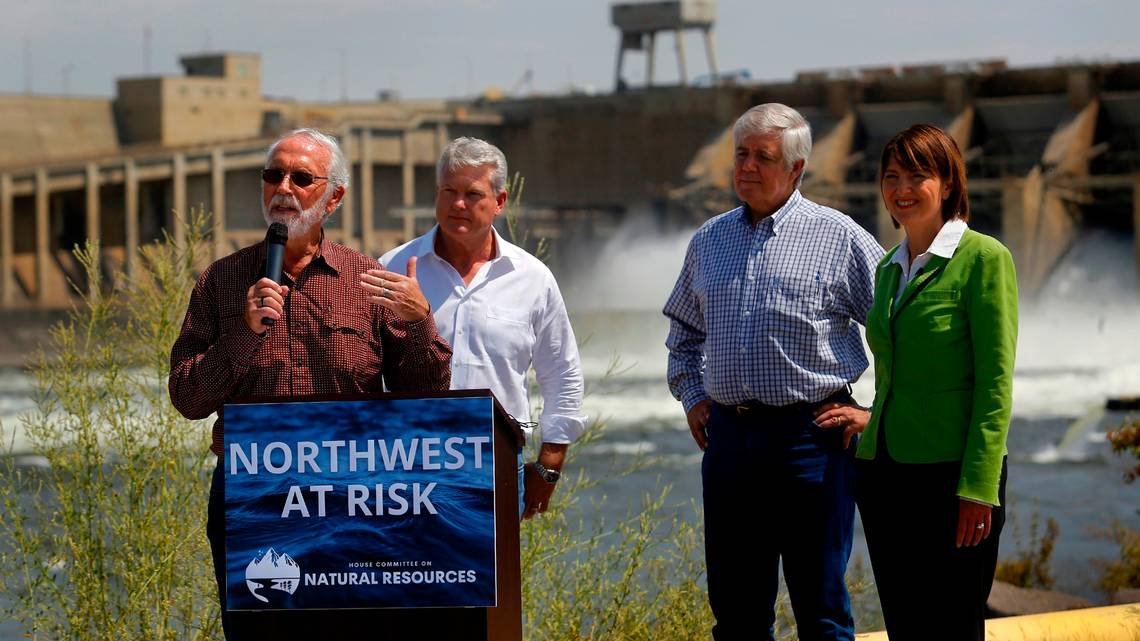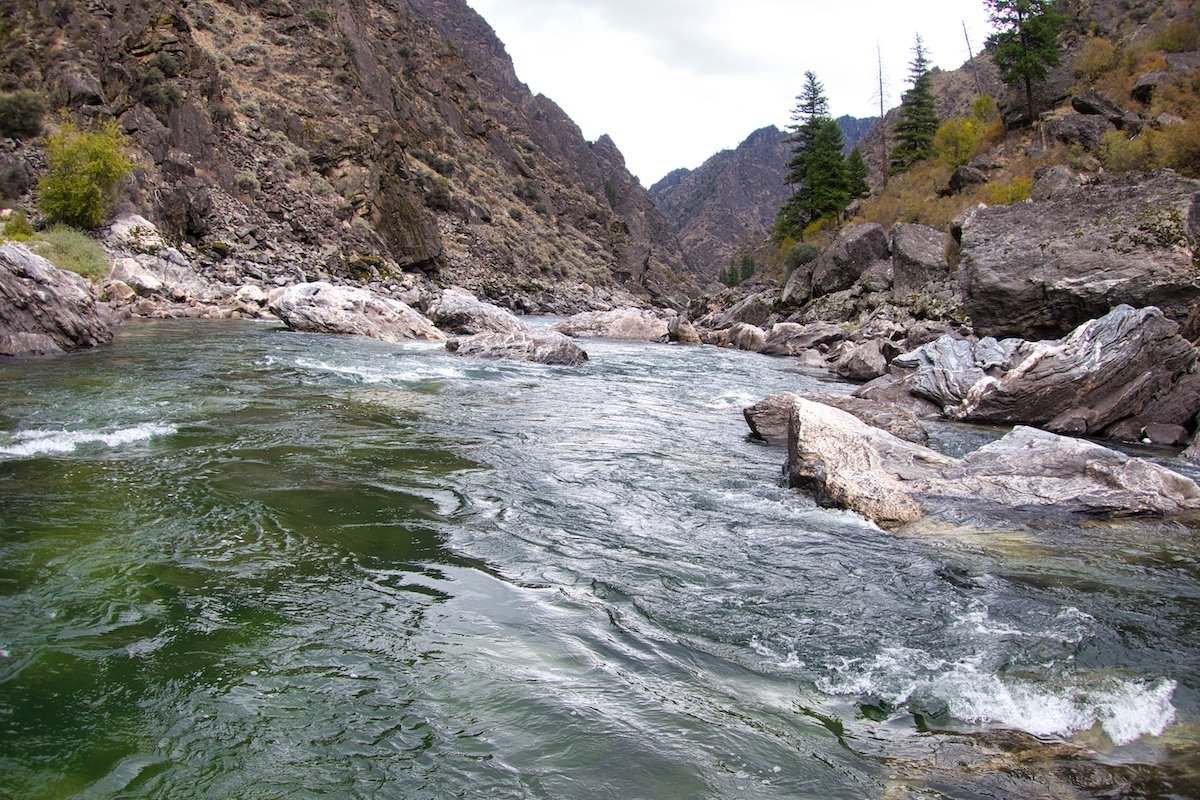Killing the Messenger
Hydroelectric power at the expense of lost salmon runs.
The best available science tells us that the surest way to save Columbia Basin salmon is to remove dams on the lower Snake River. From the draft Executive Summary of the Comparative Survival Study:
“Overall, when all of the individual components of CSS analyses in this report are considered together, the results confirm past CSS analytical conclusions and predictions. Most importantly, CSS results in 2019 predicted that under climate change, with poor ocean conditions and poor flow conditions, smolt to adult return rates (SARs) would not meet the regional goals under non-dam breach alternatives and would not avoid population declines.”
“In addition, results from the CSS Adaptive Management evaluation (Chapter 2) and the consideration of risk and uncertainty (Chapter 6) confirm that the dam breach alternative would provide the least risk of population decline to Snake River salmon and steelhead populations.”
The Comparative Survival Study (CSS) has been gathering data on Columbia and Snake River Basin salmon since 1994. The Washington Department of Fish and Wildlife, The Oregon Department of Fish and Wildlife, The Idaho Department of Fish and Game, The Columbia Inter-tribal Fish Commission, and the U.S. Department of Fish and Wildlife, and the Fish Passage Center all take part in the long-running study. Notably absent from the list of contributors is NOAA-Fisheries and the Bonneville Power Administration itself.
The Fish Passage Center (FPC) was christened in 1983 with the advent of the BPA’s Fish and Wildlife Program. It was invented back then as a response to complaints from state and tribal fisheries managers that unbiased and accessible science on matters pertaining to Columbia Basin salmon was hard to come by.
FPC’s mission is to collect, synthesize, analyze and disseminate the science of salmon recovery to anyone curious enough to look. All the CSS data, and a lot of other salmon science, is publicly available on the FPC’s website.
The BPA’s long-running response to accessible, open, accurate data on the status of salmon: kill the messenger.
The most brazen attempt to muzzle the FPC came in late 2005, when the BPA, working alongside then Senator Larry Craig of Idaho, inserted language into an energy bill that revoked funding for the FPC. Funding for the FPC, along with the vast majority of salmon research in the Columbia Basin, is funded out of BPA’s coffers.
Bonneville and its constituents were furious with the FPC for reporting, as its mission requires, on data that strongly suggested more water moving over dams’ spillways rather than through their powerhouses would be better for fish. James Redden, a federal judge presiding over a long-running (still ongoing today, as a matter of fact) Endangered Species Act lawsuit, took heed of the data the FPC provided, and ordered the dams’ operators, the U.S. Army Corps of Engineers, to move more flow to spillways. The science proved prescient: survival rates for salmon ticked upward significantly throughout the basin.
In January of 2006, the Ninth Circuit Court reversed Sen. Craig’s and the BPA scheme to defund the FPC. But if BPA couldn’t chop off the FPC’s head, it has since attempted to kill the independent science agency another way, a fiscal death by a thousand cuts.
State and tribal fisheries managers, speaking anonymously, describe cuts that coincide with underhanded tactics.
A month ago, the Biden White House committed $200 million to restore salmon to the upper Columbia. At the same time, BPA cut funding for research in a key tributary there. A trap and mark program on the Entiat River was initially funded last spring. However, BPA retroactively cut funding for this research at the end of June. Worse, the agency didn’t bother informing any state or tribal officials of the cuts until mid-September, just one week before any amendments to pending contracts could be done.
The past four years have been lucrative for BPA. In 2021 revenues of $3.8 billion were $360 million above projections. The windfall, however, didn’t translate to increased, or even stable funding for fish and wildlife programs. In fact, BPA’s spending on salmon decreased by $78 million from 2016-2017 levels. The fiscal shot in the arm was used to woo customers to stick with BPA as their power provider of choice.
Funding for salmon restoration in the Basin, under the current BPA-led scheme, is always a secondary consideration. In years when BPA revenues are lean, the excuse is there isn’t enough money to fully invest in salmon recovery. In flush times, the money is spent on keeping rates low and customers at utilities throughout the region satisfied. Faced with the conflicting values of maximizing revenue from sales or fulfilling their obligation to fix the ecological mess it made, BPA has shirked its responsibilities–as any unscrupulous corporation would. But BPA is not a corporation: it’s a federal agency with a primary mission to serve the public. That should include implementing recommendations emerging from the best available science. Instead, to protect its competitive position, BPA invests, as you can read tomorrow, in pseudo-science that protects what it sees as its competitive advantage.
Support my mission to remove dams throughout the US by purchasing my latest book Cracked: The Future of Dams in a Hot Chaotic World, published by Patagonia Books.
Once a week I write about critical issues that affect salmon, steelhead, and free flowing rivers throughout the west. Get monthly updates straight to your inbox!

























Lin Laughy’s latest take on the good reasons the lower four Snake River Dams should be reduced to rubble as soon as possible.